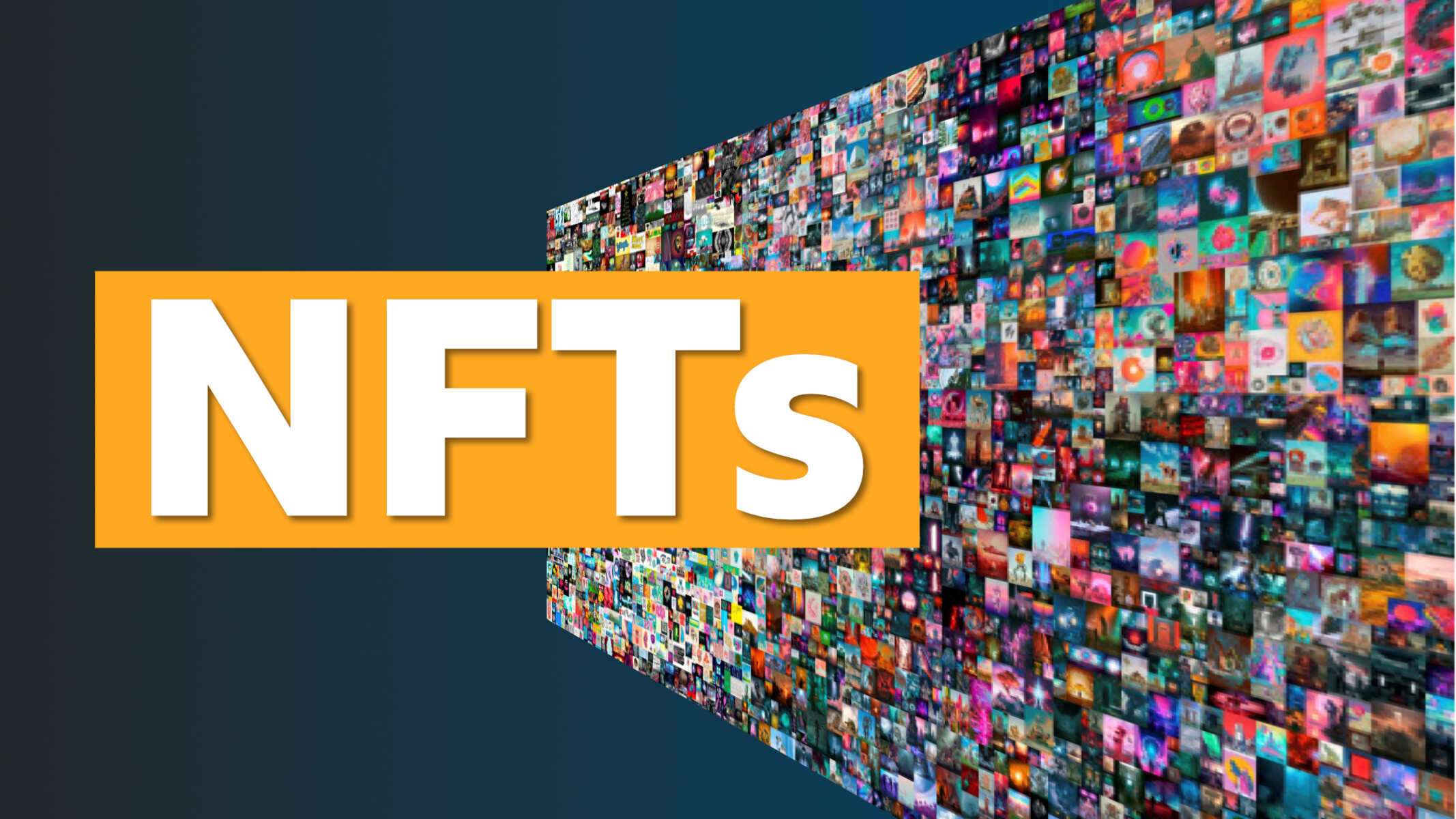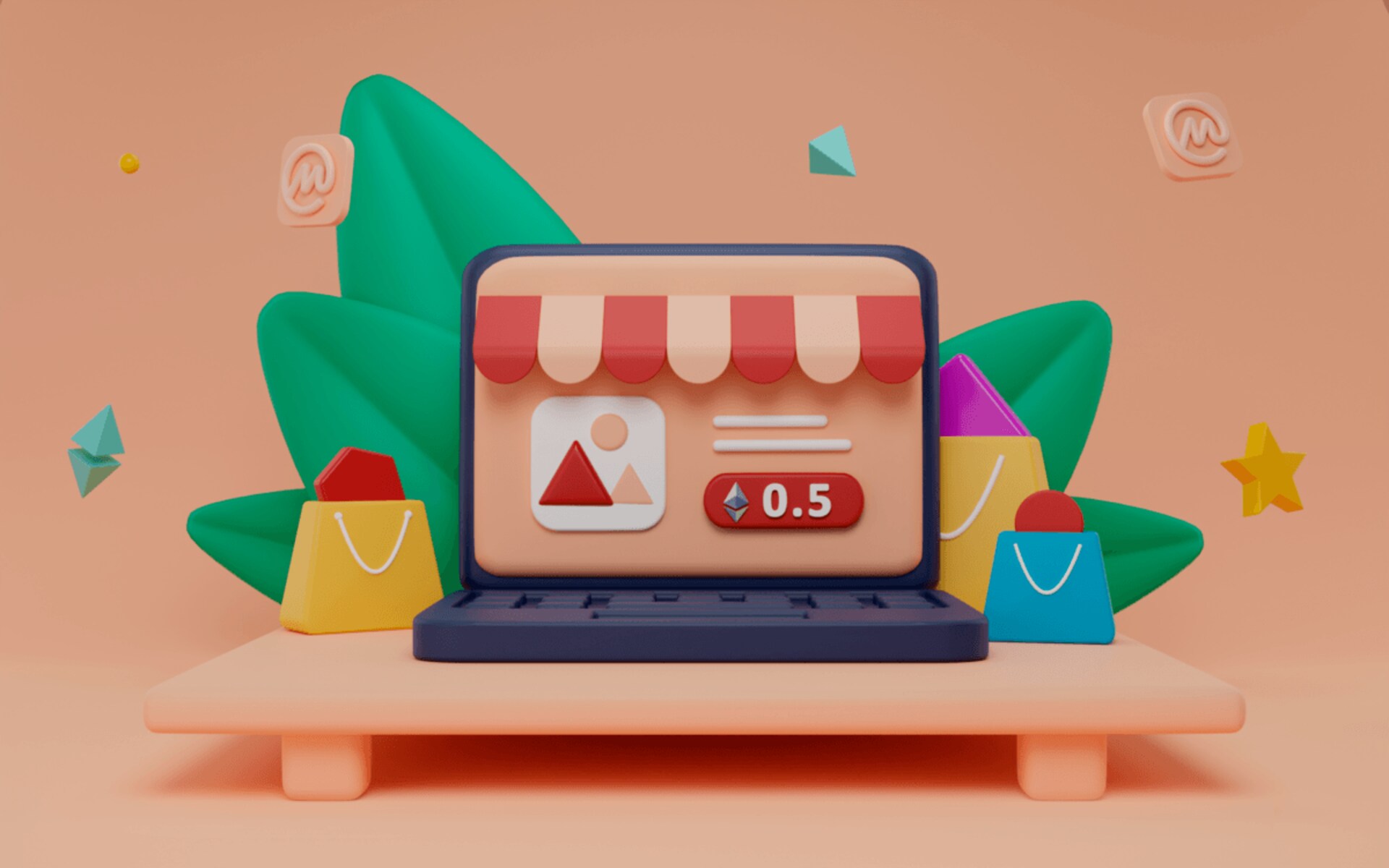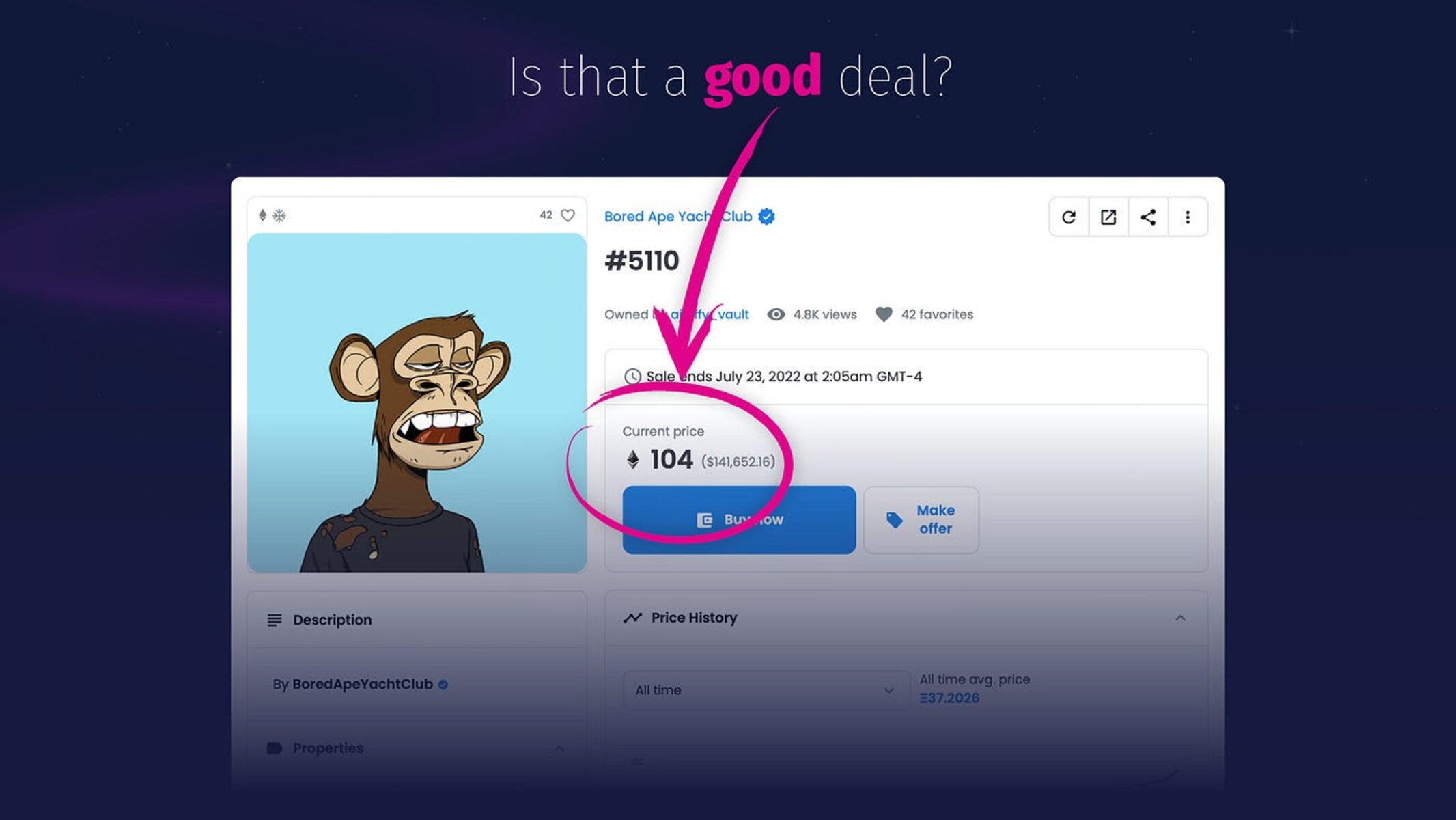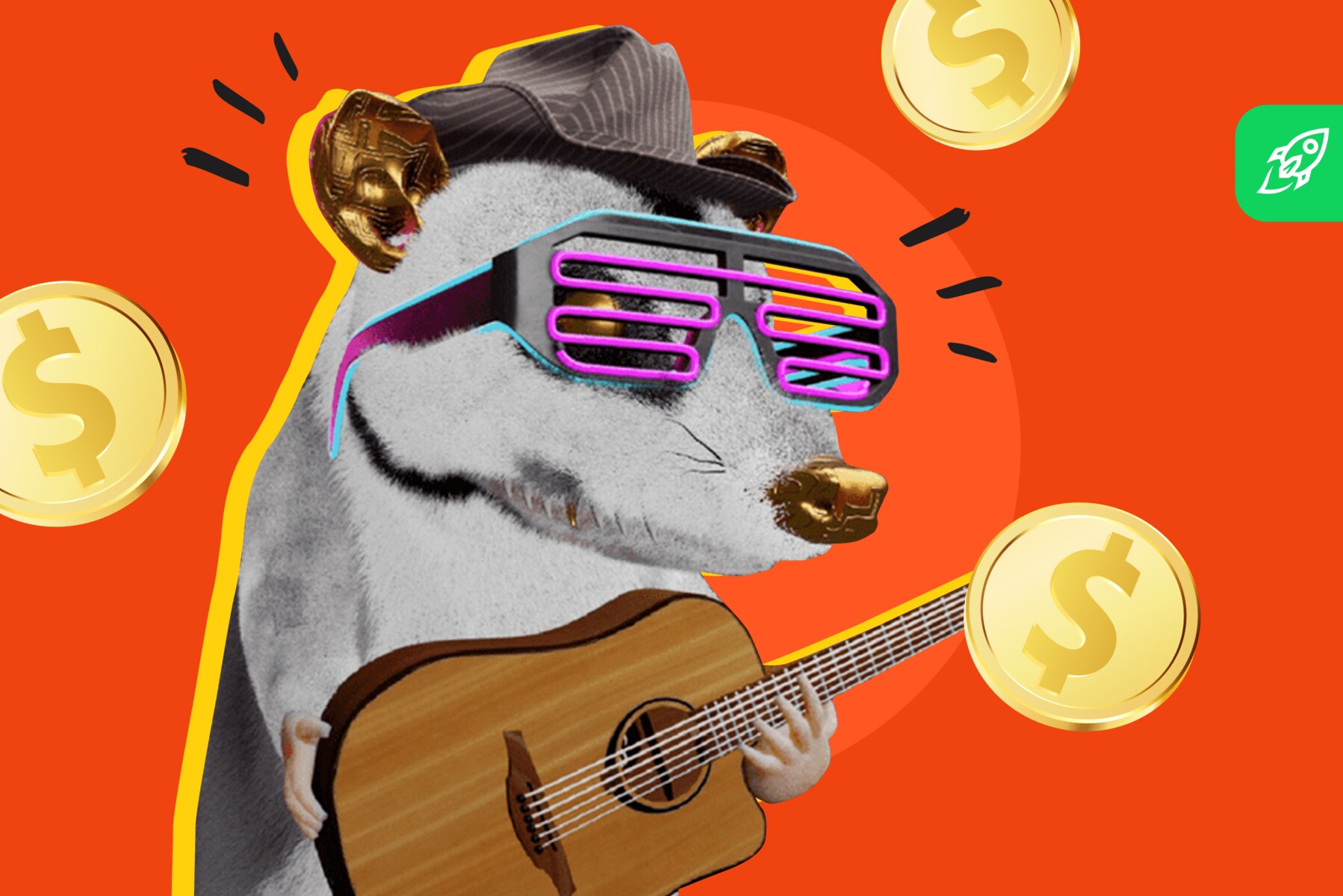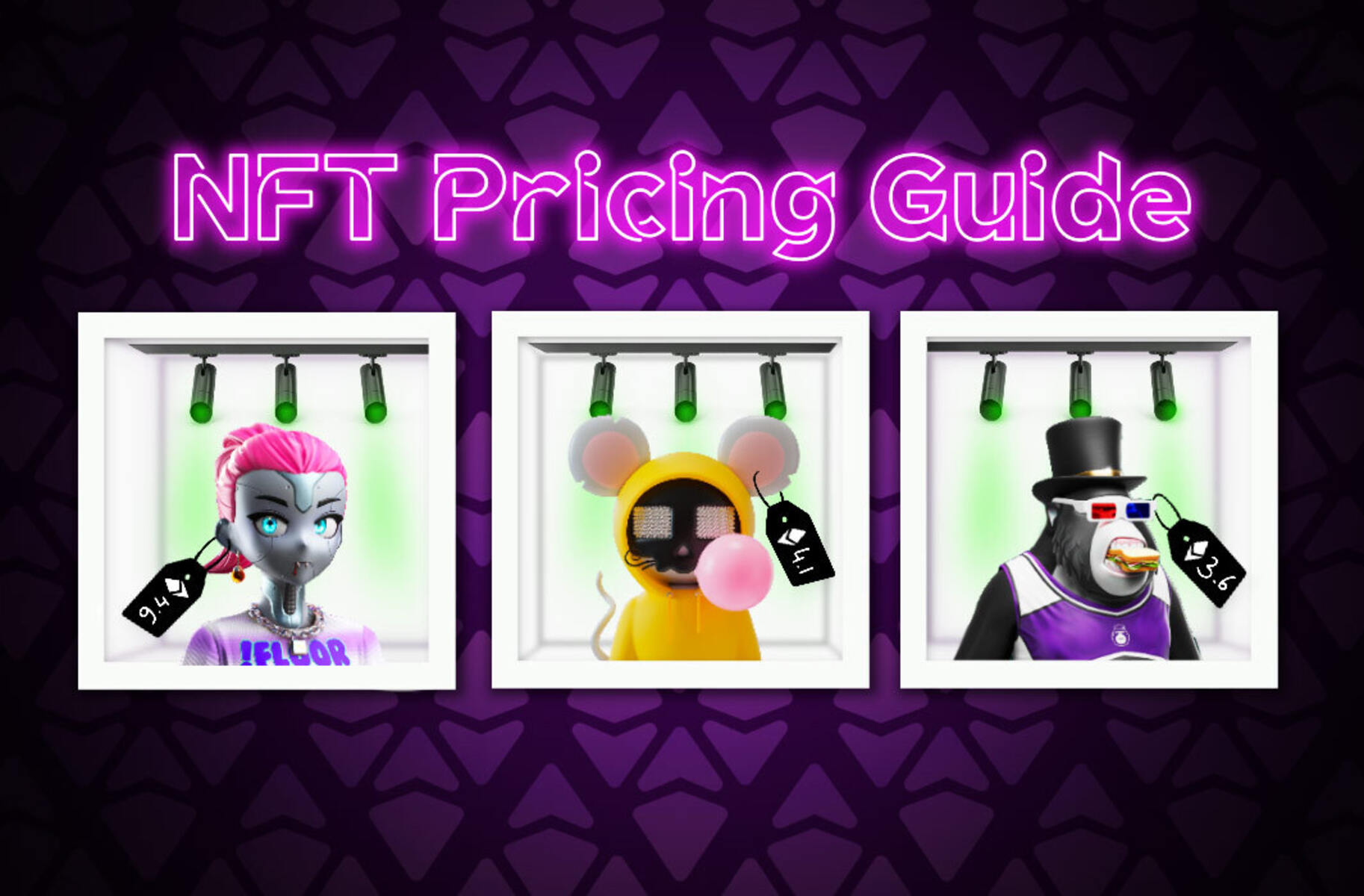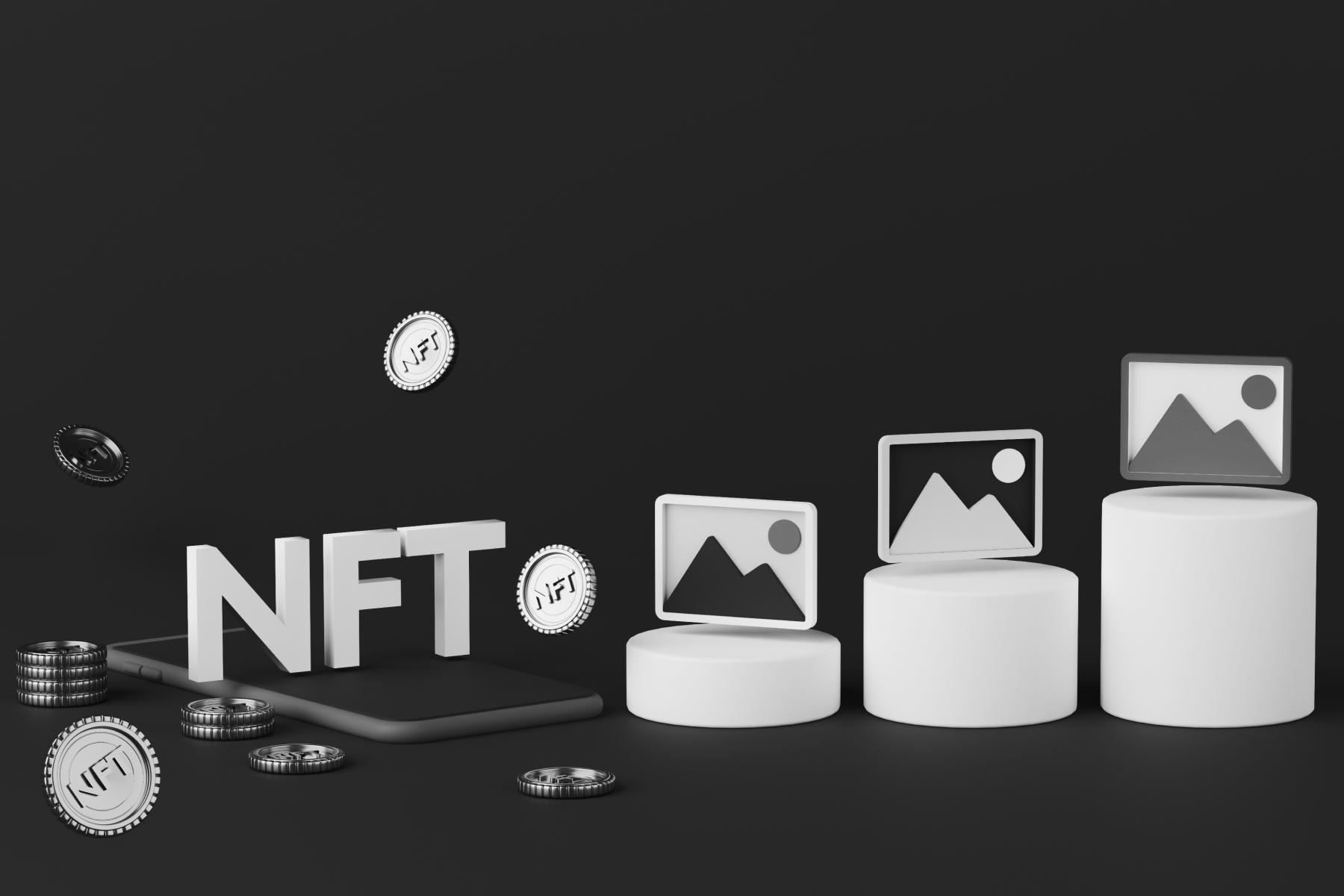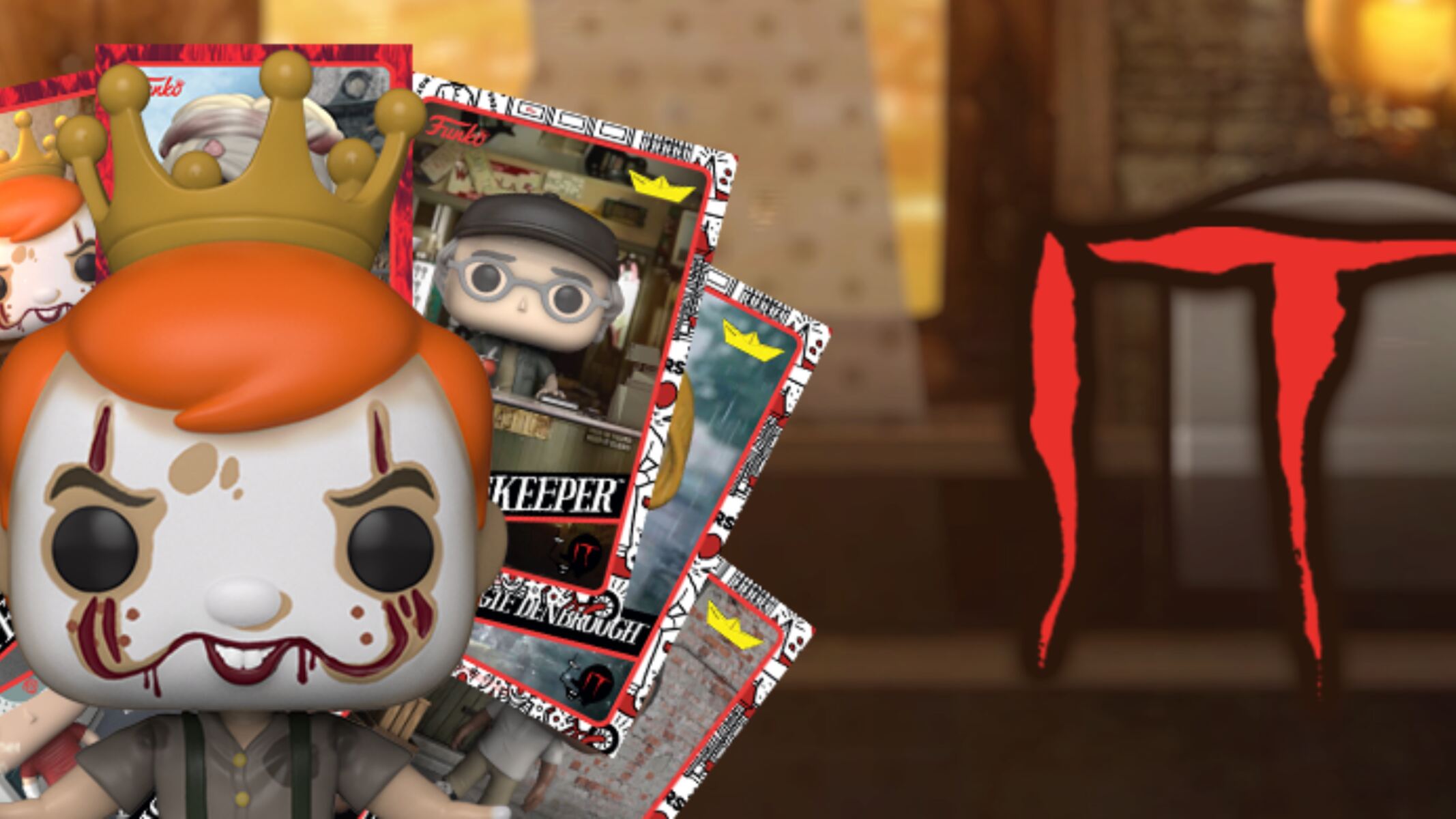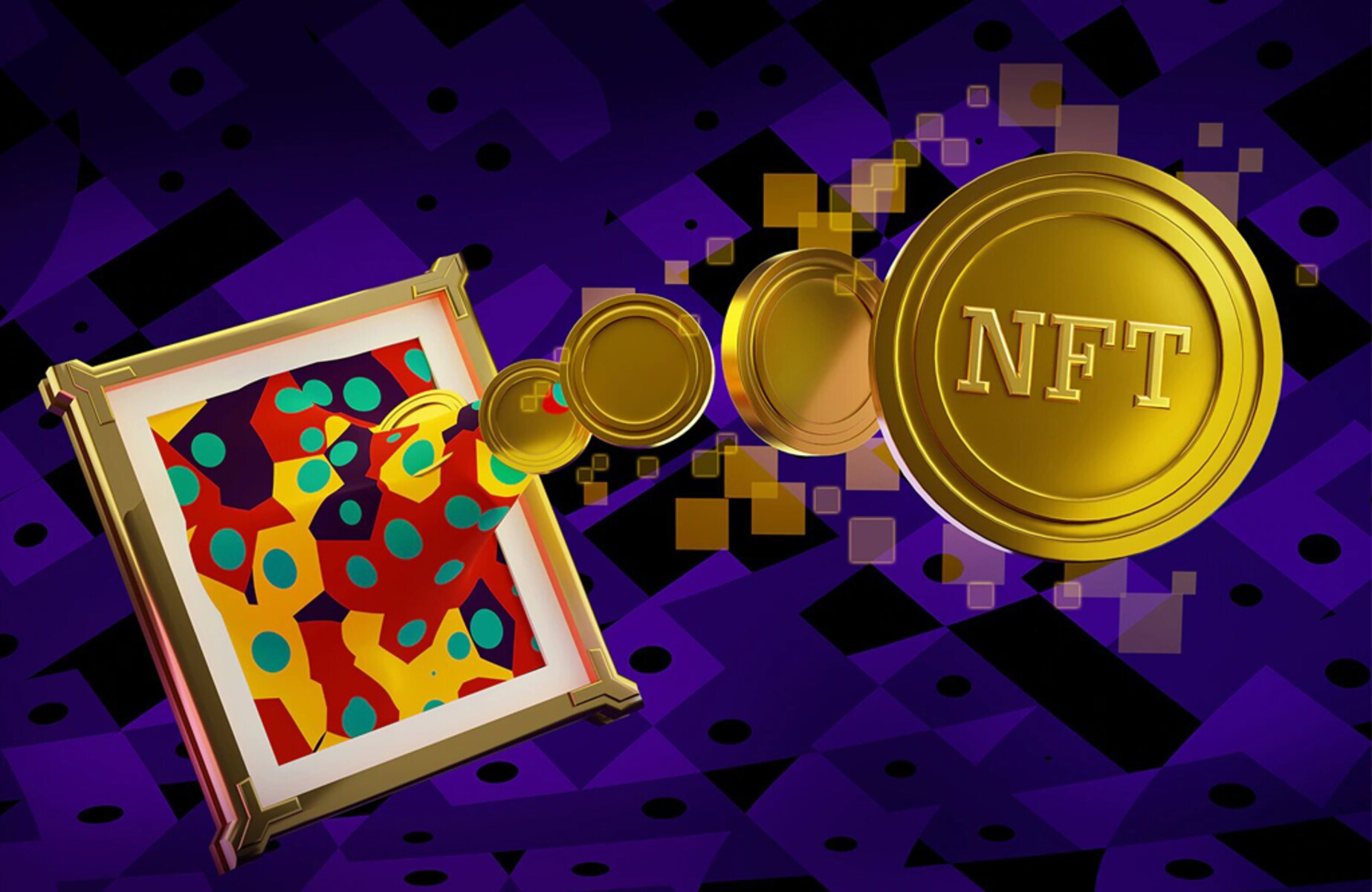Introduction
Welcome to the world of NFTs, the latest trend taking the digital world by storm! In recent months, you may have heard the term “NFT” thrown around in various conversations or seen it trending on social media. But what exactly is an NFT, and what is the point of owning one?
NFT stands for Non-Fungible Token, and it represents a unique digital asset that can be bought, sold, and owned on blockchain technology. Unlike cryptocurrencies such as Bitcoin or Ethereum, which are interchangeable and hold the same value as any other unit, NFTs are one-of-a-kind and cannot be replicated.
So, why are NFTs gaining so much attention? The primary reason is their ability to provide authenticity, ownership, and scarcity to digital content. In a world where anyone can easily duplicate and distribute digital files, NFTs offer a groundbreaking solution that brings value and uniqueness to digital art, collectibles, music, and more.
Imagine owning a digital artwork that is digitally signed and certified as one of a kind. Or having a rare digital trading card that holds real value in a virtual world. NFTs allow creators and collectors to establish the provenance and ownership of digital assets, revolutionizing the way we perceive and interact with digital content.
While the concept of NFTs may seem perplexing to some, their potential impact cannot be ignored. From art galleries and music labels to gaming companies and content creators, organizations and individuals are exploring the opportunities and challenges that NFTs bring to their respective industries.
In this article, we will dive deeper into the world of NFTs, exploring their definition, functionality, and various use cases. We will also discuss the advantages and challenges associated with NFTs, as well as their impact on specific industries like art, music, and gaming.
So, buckle up and get ready to explore the fascinating realm of NFTs, where digital ownership and value take center stage!
Definition of NFT
Before we delve deeper into the world of NFTs, let’s start by understanding what exactly an NFT is. As mentioned earlier, NFT stands for Non-Fungible Token. To grasp the concept, let’s break it down:
Non-Fungible: In the world of finance, fungible assets are items that are interchangeable and hold the same value. For example, a dollar bill can be exchanged for another dollar bill, and the value remains the same. On the other hand, non-fungible assets are unique and cannot be exchanged on a one-to-one basis. Each non-fungible asset has distinctive characteristics that differentiate it from others.
Token: A token, in the context of blockchain technology, refers to a digital representation of a physical or digital asset. These tokens are recorded and stored on a blockchain, which acts as a transparent and decentralized ledger.
When we combine these two terms, we get Non-Fungible Token, which represents a unique digital asset that can be bought, sold, and owned by individuals. Unlike cryptocurrencies such as Bitcoin or Ethereum, which are fungible tokens, NFTs have distinct properties that set them apart.
Each NFT is associated with a specific piece of digital content, which can range from artwork and music to videos, collectibles, and virtual real estate. The ownership and authenticity of this content are verified and secured through blockchain technology, making NFTs a powerful tool in establishing provenance and creating digital scarcity.
It’s important to note that NFTs do not necessarily mean that the content itself is unique. Rather, it serves as a digital certificate of ownership for that particular piece of content. This means that while anyone can view or access the content, only the owner of the NFT can claim ownership and control the original tokenized version.
As the world becomes increasingly digital, the concept of owning digital assets gains significance. NFTs provide a way to assign value and ownership to these assets, opening up new opportunities for creators, collectors, and investors.
Now that we understand the basic definition of NFTs, let’s explore how they work and the underlying technology that makes it all possible.
How does an NFT work?
To comprehend how NFTs work, we need to take a closer look at the underlying technology that powers them: blockchain. Blockchain is a decentralized ledger that records transactions across a network of computers, making it transparent and resistant to tampering.
When it comes to NFTs, blockchain provides a secure and immutable way to establish and verify ownership of digital assets. Let’s explore the steps involved in creating, buying, and selling NFTs:
- Creation: To create an NFT, a creator or artist typically uses a blockchain-based platform that specializes in NFTs. The platform allows them to tokenize their digital content, assigning a unique token or identifier to it. This token serves as the digital certificate of ownership.
- Ownership Verification: Once the NFT is created, it is recorded on the blockchain, indicating the owner’s address. This ensures authenticity and transparency, as the ownership record is publicly visible and cannot be altered without consensus from the network participants.
- Purchase: NFTs can be bought and sold on various online marketplaces that support NFT transactions. These marketplaces act as platforms where creators can showcase their digital assets, and collectors can browse and purchase them. When a collector buys an NFT, the ownership record is transferred to their address on the blockchain.
- Transaction Verification: The blockchain verifies and records the transaction, ensuring that the transfer of ownership is legitimate and secure. This guarantees the provenance of the NFT, allowing future buyers to trace its history.
- Selling: As an NFT owner, you have the option to sell your token to another interested party. The transaction occurs on the blockchain, and once the transfer is complete, the new owner’s address is recorded, and they assume ownership of the NFT.
One notable aspect of NFTs is that the ownership and transaction history are permanently recorded on the blockchain, creating a transparent and auditable record. This not only ensures the authenticity and uniqueness of the digital asset but also adds value by establishing its provenance and creating scarcity in the digital realm.
It’s important to note that the blockchain used for NFTs plays a significant role in determining the characteristics, functionalities, and interoperability of the tokens. Different blockchain networks, such as Ethereum, Flow, and Binance Smart Chain, have their own standards and specifications for NFTs.
Now that we understand how an NFT works, let’s explore the vast range of digital assets that can be turned into NFTs and discover the value they hold.
What can be turned into an NFT?
One of the fascinating aspects of NFTs is their versatility in transforming various forms of digital content into unique and ownable assets. While the most common use case for NFTs has been in the world of digital art, the possibilities extend far beyond that. Here are some examples of what can be turned into NFTs:
- Digital Artwork: NFTs have taken the art world by storm, allowing digital artists to monetize their creations like never before. Digital paintings, illustrations, photographs, and even GIFs can be tokenized as NFTs, providing a way for artists to prove ownership and sell their work.
- Virtual Real Estate: As virtual worlds and metaverses gain popularity, NFTs provide a means to buy, sell, and own virtual real estate within these digital environments. This includes properties in games like Decentraland and Cryptovoxels, where users can build and customize their virtual spaces.
- Music and Albums: Musicians and artists can turn their music, albums, and even concert tickets into NFTs. This allows fans to not only support their favorite artists but also gain access to exclusive content, limited edition releases, and unique experiences.
- Sports Collectibles: NFTs have brought a new dimension to sports memorabilia and collectibles. Moments from iconic games, virtual trading cards of athletes, and even ownership shares in sports teams can be tokenized as NFTs, catering to the growing market of sports enthusiasts and collectors.
- Domain Names: Domain names, which are essential in establishing online presence, can also be turned into NFTs. Owning a tokenized domain name provides a unique opportunity for investors and individuals to acquire and trade virtual properties in the digital realm.
- Virtual Fashion: With the rise of virtual avatars and digital fashion, NFTs offer a way to own and showcase unique digital outfits, accessories, and skins. These tokenized virtual fashion items can be used in games, virtual reality experiences, and social platforms.
These are just a few examples of what can be transformed into NFTs, but the possibilities are endless. As the technology evolves, we can expect to see innovative use cases emerge and further expansion into sectors such as film, literature, intellectual property, and more.
It’s worth noting that the value of an NFT is subjective and driven by factors such as the creator’s reputation, scarcity, market demand, and perceived worth. The intersection of digital content and blockchain technology has opened up new opportunities for creators, collectors, and investors, creating a fascinating ecosystem with its own set of advantages and challenges.
Now that we understand what can be turned into an NFT, let’s explore the value associated with these unique digital assets.
The value of NFTs
NFTs have gained significant attention due to their potential to hold substantial value. While the concept of owning digital assets may sound abstract to some, the value attached to NFTs can be substantial and multifaceted. Here are some key factors that contribute to the value of NFTs:
Authenticity and Ownership: NFTs provide a way to establish and prove ownership of unique digital assets. This authenticity and provenance are highly valued in the world of digital content, where replication and distribution are easily achieved. Owning an NFT ensures that you possess the original tokenized version of a digital asset, making it exclusive and valuable.
Scarcity and Limited Supply: NFTs can be designed to have controlled scarcity, enhancing their desirability and value. Creators can create limited edition NFTs, such as a series of 10 pieces or even a single unique item. Scarcity creates a sense of rarity, making the NFT more valuable to collectors who seek exclusivity.
Creator Reputation and Demand: The reputation and popularity of the creator behind an NFT can greatly impact its value. Established artists, musicians, and influencers who have a loyal following and a strong brand presence are more likely to see their NFTs commanding higher prices. Additionally, a high demand for a particular artist’s work can drive up the value of their NFTs in the market.
Community and Social Proof: The perception of value within a community plays a crucial role in the value of NFTs. When a particular NFT gains attention, captures the interest of collectors, and attracts widespread discussion on social media platforms, it can create a sense of social proof and increase its desirability and value.
Utility and Access: Some NFTs come with additional benefits or utilities that add to their value. For example, owning an NFT of a virtual concert ticket may grant access to exclusive virtual events or backstage interactions. NFTs that provide utility or exclusive experiences can often command higher prices.
Secondary Market Trading: The ability to buy and sell NFTs on various online marketplaces creates a thriving secondary market. This market allows for the trading and auctioning of NFTs, where limited availability and high demand can drive up prices. The resale value of certain NFTs can far exceed their initial purchase price, creating an investment opportunity for collectors.
It’s important to note that the value of NFTs can be highly volatile and can fluctuate depending on market trends, investor sentiment, and other external factors. As with any investment, it’s crucial to conduct proper due diligence and assess the underlying qualities and demand factors before making a purchase.
The value of NFTs extends beyond the monetary aspect, as they also offer a new way to support artists, creators, and content producers directly. By purchasing an NFT, collectors can directly contribute to the success and growth of their favorite artists or causes, forging a deeper connection between creators and their fans.
Now that we have explored the value associated with NFTs, let’s delve into the advantages and benefits that they bring to the table.
Advantages of NFTs
NFTs bring several advantages and benefits to the digital landscape, revolutionizing the way we interact with, create, and own digital content. Here are some key advantages of NFTs:
Provenance and Authenticity: NFTs provide a reliable and immutable way to establish ownership and prove the authenticity of digital assets. Through blockchain technology, the ownership history and transaction records of an NFT can be traced, guaranteeing its provenance and ensuring that it is the original, unique version of the asset.
Monetization for Creators: NFTs offer creators a new revenue stream by allowing them to monetize their digital content. Artists, musicians, writers, and other creators can directly sell their work as NFTs, bypassing traditional gatekeepers and intermediaries. This helps democratize the creative industry and provides opportunities for emerging talent to reach larger audiences and generate income.
Ownership Control for Collectors: NFTs grant collectors full ownership and control over the digital assets they purchase. Unlike traditional digital files that can be easily copied or replicated, owning an NFT ensures that the collector possesses the original tokenized version of the asset. This ownership control adds value and exclusivity to the digital content.
Interoperability and Accessibility: NFTs have the potential to bring interoperability and portability to the digital world. With the use of common standards such as ERC-721 and ERC-1155, NFTs can be seamlessly transferred and utilized across different platforms, virtual worlds, and applications. This enables a more connected and accessible digital ecosystem, where users can easily interact with NFTs across various platforms and experiences.
New Revenue Models: NFTs provide opportunities for innovative revenue models. Creators can include royalties in their NFTs, earning a percentage every time the NFT is resold in the secondary market. This allows artists to benefit from the appreciation of their work and establish long-term value for their creations.
Engagement and Community Building: NFTs have the potential to foster deeper engagement and connection between creators and their audience. Collectors of NFTs become a part of the creator’s community, gaining access to exclusive content, experiences, and interactions. This strengthens the bond between creators and fans, creating a more immersive and participatory relationship.
Disrupting Traditional Systems: NFTs challenge traditional systems and hierarchies within various industries. By providing a direct connection between creators and consumers, NFTs eliminate the need for intermediaries, reducing costs and increasing transparency. This disruption allows for more equitable distribution of revenue and recognition within the creative and collectible markets.
These advantages highlight the transformative power of NFTs in the digital realm. However, it’s important to recognize that NFTs also come with challenges and criticisms, which we will explore in the next section.
Now that we have seen the advantages of NFTs, let’s delve into the challenges and criticisms they face.
Challenges and criticisms of NFTs
While NFTs have gained popularity and presented exciting opportunities, they also face several challenges and criticisms. It’s important to examine these concerns to fully understand the implications of this emerging technology. Here are some of the key challenges and criticisms of NFTs:
Environmental Impact: One of the significant criticisms of NFTs is their environmental impact. Most NFTs are currently created and traded on blockchain networks like Ethereum, which consume a significant amount of energy. The energy consumption associated with mining and validating transactions on these networks has raised concerns regarding their contribution to carbon emissions and climate change.
Lack of Regulation and Standards: The NFT market currently operates with limited regulation and standards. This lack of oversight can lead to issues such as copyright infringement, fraud, and scams. Additionally, the absence of universal standards for metadata and ownership information makes it challenging to assess the authenticity and value of NFTs accurately.
Market Volatility and Speculation: The NFT market can be highly volatile, with rapid fluctuations in prices. Speculation and hype surrounding certain NFTs can drive their prices to extreme levels, creating concerns about market bubbles and potential financial risks for investors and collectors. It’s important for individuals to exercise caution and conduct thorough research before entering the NFT market.
Accessibility and Exclusivity: While NFTs offer unique ownership opportunities, the exclusivity and high prices associated with some NFTs can limit access for the broader audience. This can create a perception that NFTs are only accessible to a select few, raising questions about inclusivity and affordability within the digital art and collectibles market.
Copyright and Intellectual Property Concerns: The tokenization of digital assets raises issues related to copyright and intellectual property. It becomes essential to consider the rights and permissions associated with the original content and ensure that creators are adequately protected. Without proper protocols and mechanisms in place, NFTs may exacerbate intellectual property disputes and compromise artists’ rights.
Technical Challenges and Scalability: The current blockchain infrastructure faces technical challenges and scalability issues. High transaction fees and network congestion can hinder the smooth user experience and limit the wider adoption of NFTs. As the demand for NFTs continues to grow, addressing these technical challenges becomes crucial for the long-term sustainability of the ecosystem.
These challenges and criticisms provide a more nuanced perspective on NFTs and highlight the importance of responsible practices, sustainable approaches, and ongoing discussions within the industry to address these concerns. By acknowledging these issues, the potential for NFTs to truly revolutionize the digital landscape can be realized in a more ethical and inclusive manner.
Now, let’s explore the impact of NFTs in specific industries, starting with their influence in the art world.
NFTs in the art world
NFTs have created a seismic shift in the art world, transforming the way we create, buy, sell, and collect art. The art industry, known for its traditional gatekeepers and intermediaries, has been disrupted by the emergence of NFTs, offering new possibilities and challenges. Here are some key impacts and implications of NFTs in the art world:
Democratization of Art: NFTs have democratized the art world by providing a platform for artists to showcase and sell their work directly to a global audience. This removes the reliance on traditional galleries and art institutions and allows artists of all backgrounds and experience levels to gain exposure and monetize their creations.
Monetizing Digital Art: NFTs have opened up a new realm of possibilities for digital artists to monetize their work. Previously, it was challenging for digital artists to sell their art due to the ease of copying and unauthorized distribution. With NFTs, artists can tokenize their digital creations, ensuring proof of ownership and authenticity, and earn revenue through sales and royalties.
Establishing Provenance and Authenticity: NFTs solve the problem of establishing provenance and authenticity in the digital art world. Each NFT serves as a verifiable certificate of ownership, permanently recorded on the blockchain. This not only adds value to the art piece but also ensures that artists receive recognition and proper compensation for their work.
New Revenue Streams for Artists: NFTs introduce new revenue streams for artists beyond the traditional model of selling physical artworks. Artists can earn royalties every time their NFT is resold, providing ongoing income and benefiting from the increasing value of their art in the secondary market. This offers a more sustainable and long-term approach to generating income for artists.
Exploring Interactive and Dynamic Art Forms: NFTs open up opportunities for artists to experiment with interactive and dynamic art forms that can evolve over time. With the ability to embed code, animations, and interactivity within an NFT, artists can create immersive digital experiences and push the boundaries of traditional static art.
Engagement and Collaboration: The decentralized nature of NFTs fosters collaboration and engagement within the art community. Artists can collaborate with other creators, musicians, and even the audience to develop unique multimedia experiences associated with their NFTs. Collectors also have the opportunity to interact with the art and contribute to its narrative, creating a more participatory relationship.
Challenges and Criticisms: While NFTs have brought significant opportunities to the art world, they also face challenges and criticisms. Concerns about environmental impact, exclusionary pricing, and the exploitation of emerging artists have arisen. It’s crucial for the industry to address these issues and ensure that the benefits of NFTs are accessible to a wider range of artists and collectors.
NFTs have disrupted the art world, empowering artists and collectors and reshaping how we perceive and value digital artwork. The impact of NFTs in the art industry is profound, paving the way for a new era of creativity, ownership, and artistic expression.
Now, let’s explore how NFTs have made their mark in the music industry.
NFTs in the music industry
NFTs have emerged as a game-changer in the music industry, disrupting traditional revenue models and providing new opportunities for artists and fans. From album releases to exclusive experiences, NFTs have transformed the way we engage with and monetize music. Here are some key impacts of NFTs in the music industry:
New Revenue Streams for Artists: NFTs have opened up exciting possibilities for musicians to generate revenue beyond traditional methods. Artists can tokenize their music as NFTs, allowing fans to purchase unique editions directly from the artists themselves. This creates a direct connection between artists and fans and enables artists to earn income from music sales, bypassing intermediaries.
Exclusive Content and Experiences: NFTs offer a platform for artists to provide exclusive content and experiences to their most dedicated fans. Limited edition releases, special access to backstage events, virtual meet-and-greets, and even private concerts can be tokenized as NFTs, allowing fans to own and experience something truly unique and memorable.
Royalties and Resale Benefits: Similar to the art world, NFTs in the music industry can incorporate smart contracts that provide artists with royalties every time their music is resold. This mechanism allows artists to benefit from the increasing value of their music in the secondary market and ensures ongoing revenue even after the initial sale.
Community Engagement and Fan Participation: NFTs enable musicians to engage their fanbase in new and exciting ways. By offering exclusive perks and interactive experiences within NFTs, artists can deepen their connection with fans and create a sense of belonging within their community. Fans can become active participants rather than passive listeners, contributing to the creative process and shaping the artist’s journey.
Support for Emerging Artists: NFTs provide a platform for emerging artists to gain exposure and monetize their music. With fewer barriers to entry and the ability to directly connect with fans, up-and-coming musicians can build a following and earn income from their music, regardless of their previous industry connections or geographical location.
Challenges and Criticisms: While NFTs bring exciting possibilities, they also come with challenges in the music industry. Concerns about environmental impact, accessibility, and the potential for exploitation of emerging artists have surfaced. Addressing these challenges is crucial for creating a sustainable and inclusive ecosystem for music creators and fans.
NFTs have transformed the music industry by empowering artists, redefining the fan experience, and creating new avenues for revenue and engagement. The future of music lies in the intersection of technology and creativity, with NFTs playing a pivotal role in that evolution.
Now, let’s explore how NFTs are making waves in the gaming industry.
NFTs in the gaming industry
NFTs have revolutionized the gaming industry, unlocking a new dimension of ownership, value, and engagement for players and game developers alike. From in-game assets to virtual land, NFTs have transformed how we experience and monetize games. Here are some key impacts of NFTs in the gaming industry:
Digital Asset Ownership: NFTs enable players to truly own their in-game assets. Traditionally, players would spend time and money acquiring virtual items, only to have limited control and no ownership of those items. With NFTs, players can purchase and own unique, verifiable digital assets that are secured on the blockchain.
Player-Driven Economies: NFTs have given rise to player-driven economies within games. Players can buy, sell, and trade in-game items and resources directly with other players, creating vibrant and decentralized virtual marketplaces. This not only provides players with financial incentives but also fosters community engagement and social interaction.
Virtual Real Estate: NFTs have introduced the concept of virtual real estate, allowing players to own and develop virtual land within games and metaverses. This virtual land can be used for building structures, hosting events, and engaging in unique gaming experiences. NFTs give players true ownership and control over their virtual spaces.
Cross-Game Compatibility: NFTs based on interoperable standards allow players to use their assets across different games and platforms. This means that an item acquired in one game can potentially be used or traded in another, creating an interconnected gaming ecosystem. Cross-game compatibility opens up new possibilities for players to explore and expand their gaming experiences.
Unique and Limited Edition Items: NFTs allow game developers to create and release limited edition and exclusive in-game items. This scarcity adds value and excitement to the gaming experience, as players compete to own rare and sought-after items. NFTs also enable developers to reward players with unique items for their achievements and contributions to the game.
Monetization for Developers: NFTs present new revenue streams for game developers. With the ability to sell NFTs directly to players, developers can generate income beyond traditional game sales. Additionally, the secondary market for NFTs allows developers to participate in ongoing revenue through royalties, as their creations are bought, sold, and traded by players.
Crowdfunding and Player Funding: NFTs have opened up avenues for crowdfunding and player funding in the gaming industry. Developers can tokenize in-game items, virtual spaces, or even game concepts as NFTs, allowing players and investors to support and contribute to the development process. This decentralized financing model can provide more opportunities for independent game developers and innovative game ideas.
While NFTs have brought significant benefits to the gaming industry, challenges such as scalability, technical limitations, and market saturation need to be addressed. Collaboration and innovation will be essential in harnessing the full potential of NFTs for gaming.
NFTs have forever changed the landscape of gaming, empowering players, enabling new revenue models, and fostering decentralized economies within virtual worlds. The future of gaming is poised to be a more immersive, player-centric, and interconnected experience with NFTs at its core.
Now, let’s explore the sustainability concerns associated with NFTs.
Sustainability concerns with NFTs
While NFTs have brought about significant advancements and opportunities, they have also raised concerns regarding their environmental impact and sustainability. Here are some key sustainability concerns associated with NFTs:
Energy Consumption: NFTs are predominantly created and traded on blockchain networks, such as Ethereum, that rely on energy-intensive processes like mining and validating transactions. The energy consumption associated with these processes has raised concerns about the carbon footprint and environmental impact of NFTs. Critics argue that the energy consumption required to create and maintain NFTs outweighs the benefits they provide.
Carbon Footprint: The energy-intensive nature of blockchain networks used for NFTs contributes to a significant carbon footprint. The electricity consumption associated with these networks, often powered by non-renewable energy sources, releases greenhouse gases that contribute to climate change. The carbon footprint of individual NFTs can vary depending on the specific blockchain network used and its energy mix.
Blockchain Scalability: Some blockchain networks face scalability challenges in terms of transaction speed and capacity. This can result in congestion and increased energy consumption. As the demand for NFTs grows, it becomes crucial to address scalability concerns to ensure a sustainable and efficient ecosystem.
E-waste and Environmental Impact of Digital Assets: NFTs enable the tokenization and ownership of digital assets, ranging from art and music to virtual items and collectibles. While this reduces physical waste associated with traditional physical goods, it raises concerns about the lifecycle and e-waste generated by digital devices like computers and servers that power the networks handling NFTs.
Carbon Offsetting and Environmental Mitigation: Some projects and initiatives are exploring ways to offset the carbon emissions associated with NFTs. These efforts involve investing in renewable energy projects or purchasing carbon credits to compensate for the environmental impact. However, there is ongoing debate about the effectiveness and transparency of such offsetting measures.
Addressing the sustainability concerns with NFTs requires industry-wide collaboration and innovation. Efforts are underway to develop more eco-friendly blockchain networks, utilize renewable energy sources, and enhance the efficiency of transaction processing. Additionally, educating users and raising awareness about the environmental impact of NFTs can drive sustainable practices and responsible consumption in the space.
As NFTs continue to evolve, it is crucial to find a balance between the benefits they bring to creators, collectors, and the economy, while also mitigating their environmental impact and promoting sustainable practices. By addressing sustainability concerns, NFTs can truly become a transformative force, driving meaningful change in the digital landscape.
Now that we have explored the sustainability concerns associated with NFTs, let’s conclude our journey into the fascinating world of NFTs.
Conclusion
NFTs have emerged as a groundbreaking technology that has transformed the way we create, buy, sell, and own digital assets. From art and music to gaming and collectibles, NFTs have revolutionized various industries by providing authenticity, ownership, and value to digital content.
Throughout this article, we explored the definition and functioning of NFTs. We discovered their ability to establish provenance, create scarcity, and offer unique ownership experiences. We also examined the wide array of digital assets that can be turned into NFTs, ranging from digital artwork and virtual real estate to music albums and fashion.
The value of NFTs became evident as we dived into their advantages, such as provenance verification, monetization for creators, and new revenue streams. We also acknowledged the challenges and criticisms associated with NFTs, including environmental impact, lack of regulation, and market volatility.
Specifically, we explored the impact of NFTs in the art world, where artists can directly monetize their work and establish provenance. In the music industry, NFTs have provided new revenue opportunities and exclusive experiences for musicians and fans. In the gaming industry, NFTs have revolutionized ownership and in-game economies, creating player-driven ecosystems.
However, we also acknowledged the sustainability concerns related to NFTs, including energy consumption, carbon footprint, and e-waste associated with digital assets. Addressing these concerns is crucial for the long-term viability and responsible growth of the NFT ecosystem.
As NFTs continue to evolve, it is important to strike a balance between innovation, accessibility, and sustainability. Collaborative efforts by the industry, creators, collectors, and blockchain developers can pave the way for a more inclusive, transparent, and environmentally conscious future for NFTs.
The world of NFTs is still unfolding, and its potential impact is yet to be fully realized. It is an exciting time for creators, collectors, and enthusiasts who are witnessing the transformation of digital ownership and experiencing the interconnectedness of the digital world.
So, whether you’re an artist showcasing your work, a collector investing in digital assets, or simply a curious observer, the realm of NFTs invites you to immerse yourself in a world where the boundaries between physical and digital ownership blur, and where creativity and technology intertwine.







